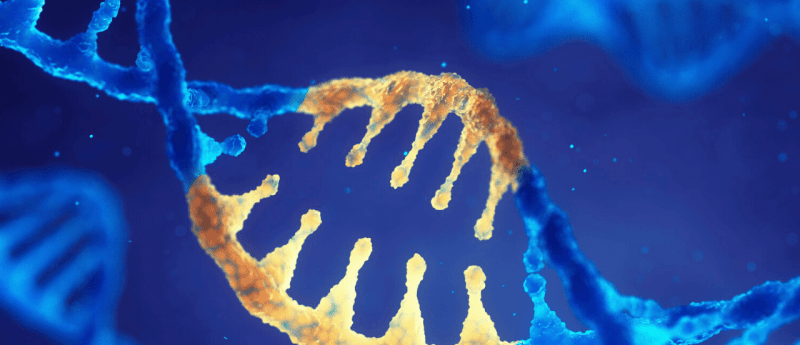A new CRISPR variant allows a range of precise genetic modifications in mammalian cells

A new CRISPR variant has been produced from the fusion of cas9 and a reverse transcriptase, allowing precise genetic modifications of mammalian DNA.
This week, researchers from MIT and Harvard University (both MA, USA) released news of their new precision DNA modification tool, ‘prime editing’. The tool marks a step forward in genome engineering, allowing the editing of DNA without the primary danger associated with CRISPR in mammalian cells. Permitting a vast array of modification types, this new gene editing approach could theoretically correct 89% of known disease-causing genetic defects.
Utilizing a fusion protein produced from the cas9 protein and a reverse transcriptase, alongside a new type of RNA guide — which they have dubbed a pegRNA — the team has developed a technique that can make precise substitutions, deletions of up to 80 nucleotides and insertions of up to 44 nucleotides. To demonstrate the power of their new system, the team corrected the sequences responsible for sickle-cell anemia and Tay Sachs disease in mammalian cells.
“The beauty of this system is that there are few restrictions on the edited sequence,” commented David Liu (Harvard University), a senior author of the paper.
By including the desired sequence within the pegRNA the team has eliminated any requirement for a separate DNA template, increasing the efficiency of the procedure. This system has also avoided the production of double strand breaks within the DNA, a process that left many concerned because of the risk of undesirable modifications.
The goal of rewriting any part of the genome has been one biologists have chased for decades; however, the area was hindered with technical difficulties prior to the CRISPR-CAS9 system. The original CRISPR system functioned by creating a double strand break to knock out genes or to allow new DNA to be inserted through homologous recombination. Unfortunately, the low efficiency of homologous recombination has been a consistent barrier to therapeutic work. While various CRISPR variants have been developed this advance is the latest, and potentially most significant, since CRISPR was harnessed for genome editing in 2013.
The researchers have allowed free access to this technology to laboratories and manufacturers around the world through the plasmid repository, Addgene, while they continue to optimize the efficiency and delivery mechanisms in various cell types.
Sources: Anzalone AV, Randolph P, Davis J et al. Search-and-replace genome editing without double-strand breaks or donor DNA. Nature. doi:10.1038/s41586-019-1711-4 (Epub ahead of print) (2019); www.broadinstitute.org/news/new-crispr-genome-editing-system-offers-wide-range-versatility-human-cells
Have any additional questions about this story? Ask us in the comments, below.
Find out more about CRISPR in these top picks from the Editor:
- CRISPR used to develop cell therapies for cystic fibrosis
- Visual protocol: editing human iPSCs with CRISPR-Cas9 and single-cell cloning
- CRISPR scientist claims to have made the world’s first gene edited babies
FAQ
Can CRISPR be used as a therapy on adults?
While there is nothing limiting the use of CRISPR on adult human cells in theory, practically, the delivery methods are often virus-based and rely on integrating into the genome. This has raised concerns over the potential risks. Also, previous incarnations of CRISPR have lacked the efficiency to produce many of the types of mutations patients would require, meaning that the tool has so far been largely confined to laboratory-based work.
Where does CRISPR ‘cut’?
One of the advantages of CRISPR is the versatility of the system. Previous gene editing techniques, such as zinc finger nucleases and talons, required specific protein combinations depending on the sequence. Utilizing guide RNAs for a selected region has meant that the only large limitation is the necessary presence of a proximal adjacent motif (PAM) site. The PAM site is defined as an NGG sequence directly following the guide RNA sequence, three base pairs after the cut site. While the PAM sequence is the key consideration, it is important to note that the epigenetic status of the region can also alter the efficiency of the process.
Why is CRISPR considered ‘good’?
Unlike its predecessors, CRISPR is easy to utilize in a variety of situations, only requiring the customization of a small, region specific DNA oligonucleotide of 22 nucleotides. This can then be quickly cloned into an already prepared plasmid and delivered into cells. The speed and ease in producing specific CRISPR constructs, combined with the high efficiency of DNA cleavage, is why the system exploded in popularity and has since given rise to a wide range of DNA interacting variants. These variants have a host of abilities including gene repression, induction, epigenetic modifications, or specific base substituting chemical reactions, but all work similarly to the basic CRISPR-guide RNA system.